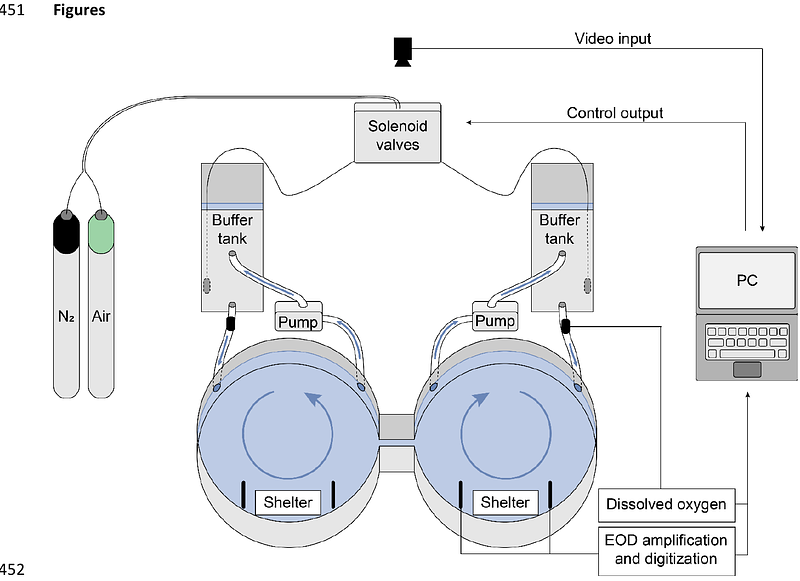The weakly electric fish, Apteronotus albifrons, avoids hypoxia before it reaches critical levels

The weakly electric fish, Apteronotus albifrons, avoids hypoxia before it reaches critical levels
Mucha, S.; Chapman, L. J.; Krahe, R.
AbstractAnthropogenic environmental degradation has led to an increase in the frequency and prevalence of aquatic hypoxia (low dissolved-oxygen concentration, DO), which may affect habitat quality for water-breathing fishes. The weakly electric black ghost knifefish, Apteronotus albifrons, is typically found in well-oxygenated freshwater habitats in South America. Using a shuttle-box design, we exposed juvenile A. albifrons to a stepwise decline in DO from normoxia (>95% air saturation) to extreme hypoxia (10% air saturation) in one compartment and chronic normoxia in the other. Below 22% air saturation, A. albifrons actively avoided the hypoxic compartment. Hypoxia avoidance was correlated with upregulated swimming activity. Following avoidance, fish regularly ventured back briefly into deep hypoxia. Hypoxia did not affect the frequency of their electric organ discharges. Our results show that A. albifrons is able to sense hypoxia at non-lethal levels and uses active avoidance to mitigate its adverse effects. SummaryThe weakly electric knifefish, Apteronotus albifrons, avoids hypoxia below 22% air saturation. Avoidance correlates with increased swimming activity, but not with a change in electric organ discharge frequency.


